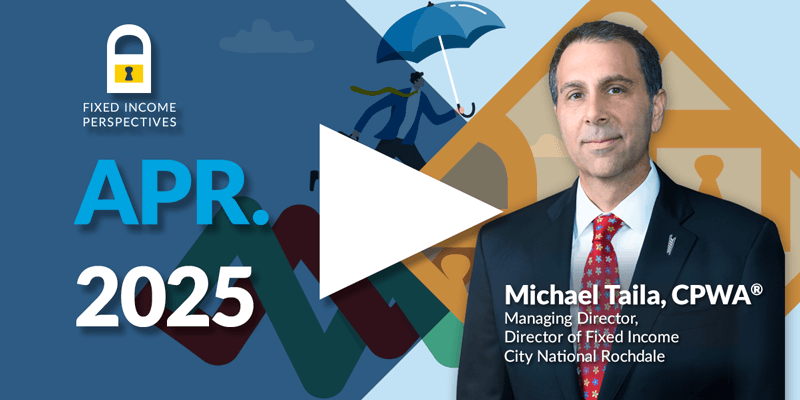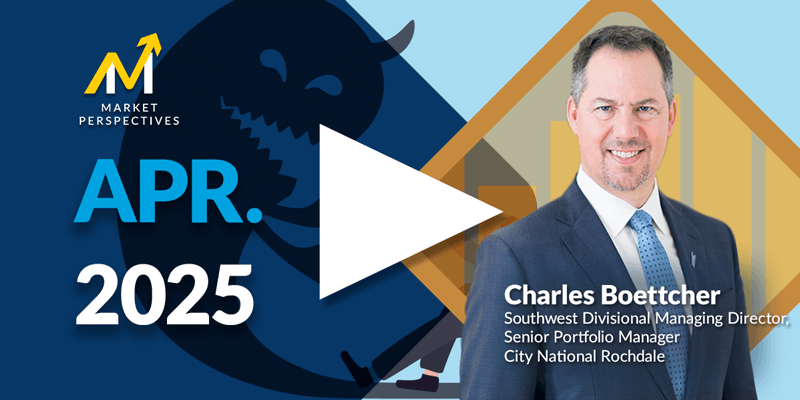
CNR Speedometers®
January 2025
Forward-Looking Six to Nine Months
TRANSCRIPT
The U.S. economy remains on solid footing heading into the new year. Our GDP growth forecast for 2025 ranges between 1.75% and 2.25%, reflecting steady, sustainable expansion. Inflation continues to moderate, and we anticipate it will end the year solidly below 3% with some measures even approaching 2% by the third quarter. Meanwhile, the labor market remains strong with wage growth providing a crucial foundation for economic momentum. Today, I'll focus on three critical speedometers, monetary policy, interest rates, and the job market.

■ Previous Month ■ Current Month
Monetary Policy
What we see
Monetary policy is one of two ways the government can influence the economy and financial markets. By manipulating interest rates, the Federal Reserve can raise or lower the cost of money to stabilize or stimulate the economy.
Dial 1: Monetary Policy, 0:54— The Federal Reserve continues its easing cycle, but at a deliberate and measured pace. After a 25-basis-point cut in December, the Fed signaled a slower trajectory for additional rate reductions. Our forecast remains firm at two rate cuts in 2025, consistent with the stance we've maintained since last fall.
Despite concerns that inflation could reaccelerate, we believe these fears are overblown. Price pressures continue to ease, and core inflation is likely to trend lower throughout the year. The Fed's cautious approach reflects its goal of balancing inflation risks without stifling economic growth. While we signal some caution on the speedometer, monetary policy remains broadly supportive of the economy.

■ Previous Month ■ Current Month
Interest Rates
What we see
Interest rates control the flow of money in the economy. High interest rates curb inflation, but also slow down the economy. Low interest rates stimulate the economy, but could lead to inflation.
Dial 2: Interest Rates, 1:33— Interest rates have risen sharply in early 2025, drawing significant attention. Our model forecasts the 10-year Treasury yield at 4.71% by the end of January. However, following a strong jobs report, the yield is now approaching 4.8%. This move underscores the sensitivity of markets to economic data and reflects lingering uncertainty around policy direction.
While this rise may appear unsettling, we believe it's a reaction to immediate data rather than a signal of structural issues. Inflation expectations remain well anchored, and it's too soon to assume rates will spiral out of control. Our end-of-year Fed funds rate forecast remains at 3.75% to 4.25%, aligning with expectations for moderated policy adjustments.
In this environment, fixed income investors should focus on the opportunity in gross yields, which remain attractive, particularly in high-quality bonds. The labor market continues to shine as a pillar of economic strength.

■ Previous Month ■ Current Month
Labor Market
What we see
Research has shown that employment and income expectations, along with credit availability, are the most important determinants of consumer spending. Personal consumption amounts to roughly 70% of GDP, making a strong labor market essential to a healthy economy.
Dial 3: Labor Market, 2:28— The latest jobs report exceeded expectations, with wage growth holding steady at 3.9% and unemployment remaining historically low. These figures underscore the resilience of the labor market, which continues to support consumer confidence and spending.
With the robust job market underpinning the economy, we remain optimistic about its ability to absorb shocks and sustain growth. While some sectors show signs of normalization, the overall strength of the labor market is a key driver of our positive economic outlook.
Corporate profit expectations also remain solid, with double-digit growth anticipated in 2025. The pro-business tone set by the new administration is likely to support continued economic expansion. After a 2024 largely driven by multiple expansions, we expect equity returns in 2025 to moderate to high single digits, driven by fundamentals and earnings growth. Valuations do remain elevated, but broadening sector participation and robust corporate profits provide a strong foundation. While challenges persist, such as elevated rates and geopolitical uncertainties, equities remain an attractive component of a diversified portfolio.
So, as we begin 2025, the U.S. economy is well positioned for a year of steady growth. Monetary policy remains supportive, but the Fed's slower pace warrants cautious optimism. Interest rates, while rising, reflect transient factors and present opportunities in high-quality fixed income. And the labor market continues to demonstrate resilience, fueling broader economic stability.
Our Speedometers® reflect a constructive and balanced outlook with optimism for equities, caution on interest rates, and confidence in the resilience of the labor market. While uncertainties do remain, we believe the economy is well equipped to navigate these challenges.
Important Information
The information presented does not involve the rendering of personalized investment, financial, legal or tax advice. This presentation is not an offer to buy or sell, or a solicitation of any offer to buy or sell any of the securities mentioned herein.
Certain statements contained herein may constitute projections, forecasts and other forward-looking statements, which do not reflect actual results and are based primarily upon a hypothetical set of assumptions applied to certain historical financial information. Certain information has been provided by third-party sources and, although believed to be reliable, it has not been independently verified and its accuracy or completeness cannot be guaranteed.
Any opinions, projections, forecasts, and forward-looking statements presented herein are valid as of the date of this document and are subject to change.
CNR Speedometers® are indicators that reflect forecasts of a 6-to-9-month time horizon. The colors of each indicator, as well as the direction of the arrows represent our positive/negative/neutral view for each indicator. Thus, arrows directed towards the (+) sign represents a positive view which in turn makes it green. Arrows directed towards the (-) sign represents a negative view which in turn makes it red. Arrows that land in the middle of the indicator, in line with the (0), represents a neutral view which in turn makes it yellow. All of these indicators combined affect City National Rochdale’s overall outlook of the economy.
City National, its managed affiliates and subsidiaries, as a matter of policy, do not give tax, accounting, regulatory, or legal advice, and any information provided should not be construed as such.
© 2025 City National Bank. All rights reserved.
NON-DEPOSIT INVESTMENT PRODUCTS ARE: • NOT FDIC INSURED •NOT BANK GUARANTEED •MAY LOSE VALUE


